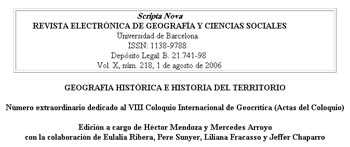Influential Factors on the Transmission and Diffusion of the Matlazáhuatl Epidemic in Zacatecas: 1737-1738
Abstract
Many disease and epidemic researchers agree that most epidemic catastrophes tend to follow famine or other disasters already present among the population in general as a result of various meteorological events influencing agricultural cycles. However, specifically in Zacatecas, there was a grain shortage but it was not significant enough to be the sole cause of the matlazáhuatl epidemic. Other determinate factors arose such as the increase of transit and migration which spurred the arrival of many new residents, along with their infected belongings and poor personal hygiene habits. To cope with the epidemic, Zacatecas relied on the health and medical resources available at the time which included one hospital, two charitable brotherhood associations, individual physicians in private practice, and divine intervention. Regarding the latter, during the matlazáhuatl epidemic, the image of the Virgin of Guadalupe, belonging to the Franciscan monks residingin a neighboring town also called Guadalupe, was taken to all of the churches of Zacatecas in popular religious processions. Even today, the tradition of the religious processions is still kept throughout the city of Zacatecas and is popularly known as the Preladita. In addition, on their part, Zacatecan authorities also took necessary precautions by storing grain supplies in order to confront the epidemic. This paper analyzes the matlazáhuatl epidemic in Zacatecas and suggests that it was caused by multiple factors of which the vectors had more influence than the nutritional conditions.Downloads
Published
2007-05-03
Issue
Section
Articles
License
Los autores que publican en esta revista están de acuerdo con los siguientes términos:
- Los autores conservan los derechos de autoría y otorgan a la revista el derecho de primera publicación, cin la obra disponible simultáneamente bajo una Licéncia de Atribución Compartir igual de Creative Commons que permite compartir la obra con terceros, siempre que estos reconozcan la autoría y la publicación inicial en esta revista.
- Los autores son libres de realizar acuerdos contractuales adicionales independientes para la distribución no exclusiva de la versió de la obra publicada en la revista (com por ejemplo la publicación en un repositorio institucional o en un libro), siempre que se reconozca la publicación inicial en esta revista.





